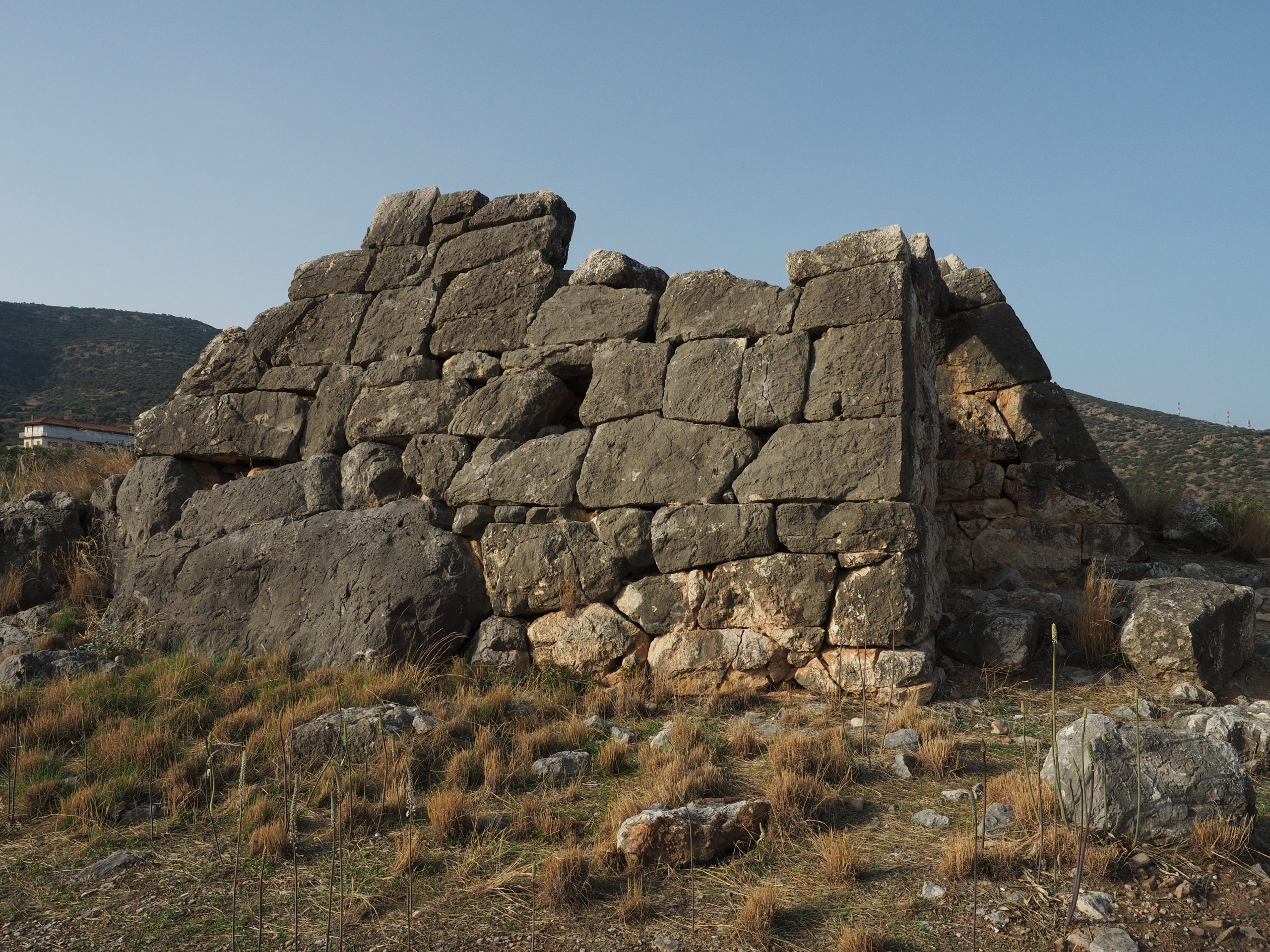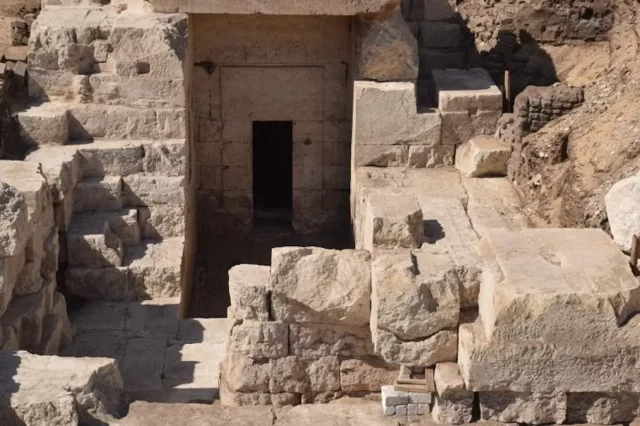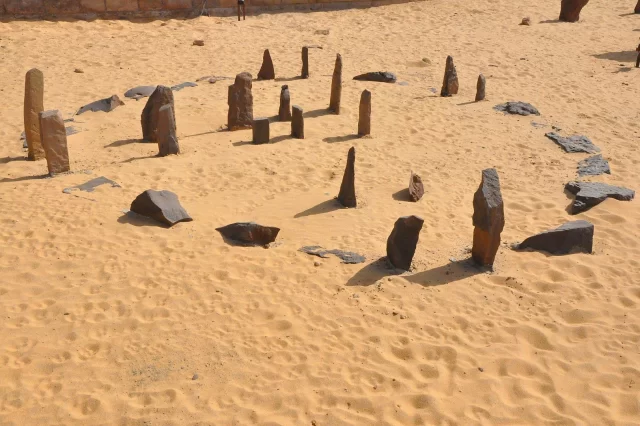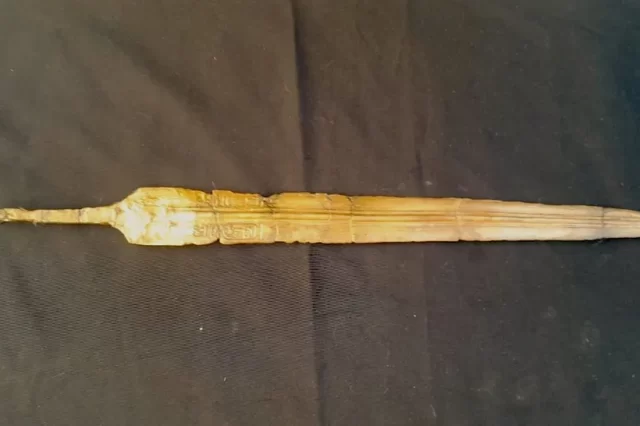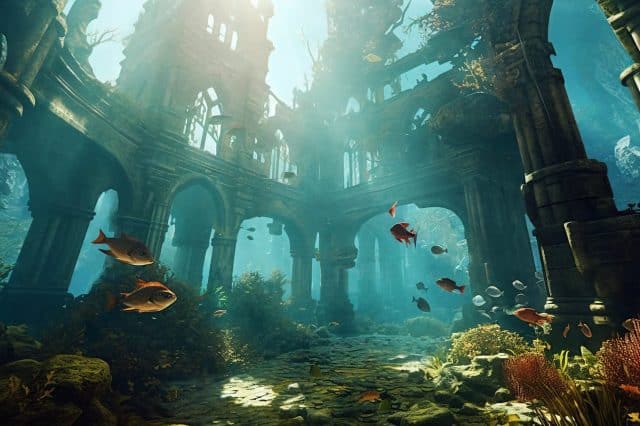Located west of Athens lay the remnants of one of the most famous ancient Pyramids built by the ancient Greek civilization. It is believed that there were up to 16 pyramidal-like structures in ancient Greece at one point.
Hellinikon – Introductory Approach
One of the most critical factors to consider when completing an in-depth analysis of the ancient world is the interconnection between the different cultures. Hellinikon is one of the prime examples to use when completing an in-depth analysis of the relationship between ancient civilizations of the Mediterranean.
Therefore, for a more analytical, well-rounded, and informative understanding, when studying a specific civilization’s history and culture, for instance, the Egyptians will have to consider other cultural and historical aspects that the Egyptians provided to the rest of the ancient world.
Today, we are studying the Greek Pyramid of Hellinikon. Even though there has been an extensive analysis through different Curiosmos articles and blog posts regarding Egyptian architecture and the history of the culture, this one is slightly different.
It has no similarities with the rest of the Egyptian articles because even though it’s based on the Hellinikon, a Greek pyramid of ancient times and one of the only architectural monuments preserved in the land and adopted by the Egyptians.
Facts About the Ancient Greek Pyramid of Hellinikon
1. Primary Excavation of Hellinikon
Firstly, Weigand found the Pyramid of Hellinikon for the first time in the modern era. He was the first that, after removing the fill between the marble, tried to study the monument’s origin extensively. Secondly, the American School of Archaeology at Athens continued the study around 1937.
2. General Characteristics
Although surrounded by a rectangular area, the outer slopes of the Pyramid have dimensions of 7.03 to 9.07. The external walls that protect the Pyramid have a rising gradient of 60 degrees and achieve a height of 3.50 meters.
3. Location of the Monument
The Pyramid of Hellinikon and the smaller monuments surrounding it are located in the southwestern area of the Argolid Plain. Seeing through the areas and the regions of antiquity, the place was close to Tegea, Kefalari, Arcadia, and Kynouria. Today, we find it close to the springs of the river of Erasinos.
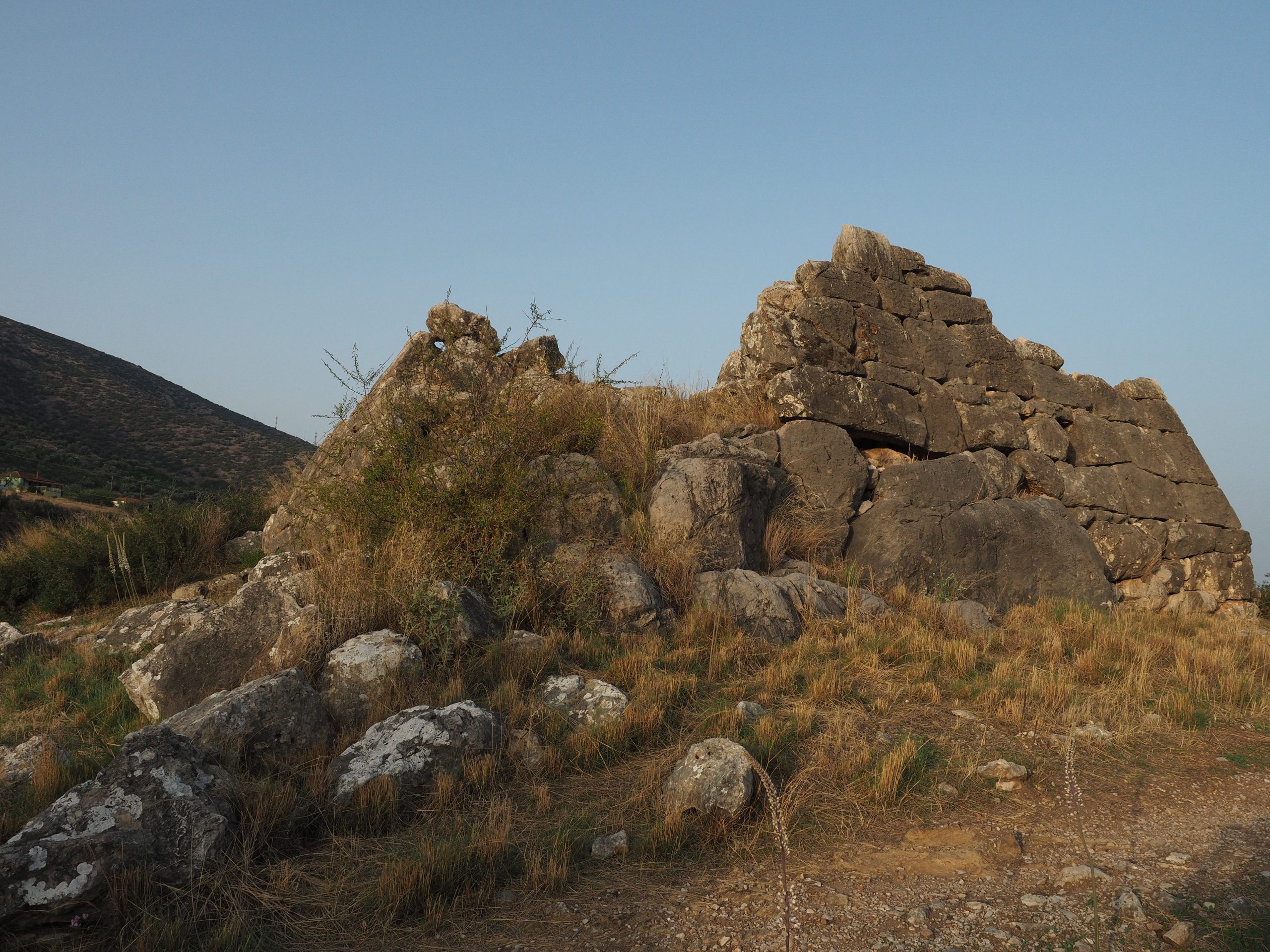
Hellinikon – Function and Design
4. Casual Rooms
Even though at the end of the analysis, one can look at the different early interpretations, some research and excavations found that some designs had corridors, doors, rooms, and other walls, just like a usual house. Therefore, with the main entrance on the eastern side, a narrow passage leads to a smaller door attached to a square room of 7 meters long sides.
5. Deviation from Egyptian Culture
One of the most interesting fundamental building aspects of the Hellinikon is the impressive and somewhat mysterious construction behind it. More specifically, the entire building is based on grey limestone, something rare when it was built. Additionally, it deviates from the Egyptian model since it combines a trapezoidal and partially polygonal system built by large blocks.
6. Lack of Historical Resources
The point that, for me, has to come first and be stated before the specific analysis of the monument is that we don’t find many resources. Primarily, we find fewer resources than the number, which would provide enough for our analysis of Hellinikon. The Greek poets didn’t embrace the actual work of the pyramids on Greek soil. Consequently, historians couldn’t provide a factual analysis of the buildings’ aspects.
7. The function of Hellinikon
Additionally, the aforementioned lack of essential resources makes it challenging to understand the reasoning behind the design of the building. Archaeologists believe that it consisted of a memorial observation. Other statements depict communication between others towards the neighboring regions. Nonetheless, Pausanias provides a general interpretation, analyzed in the next point.
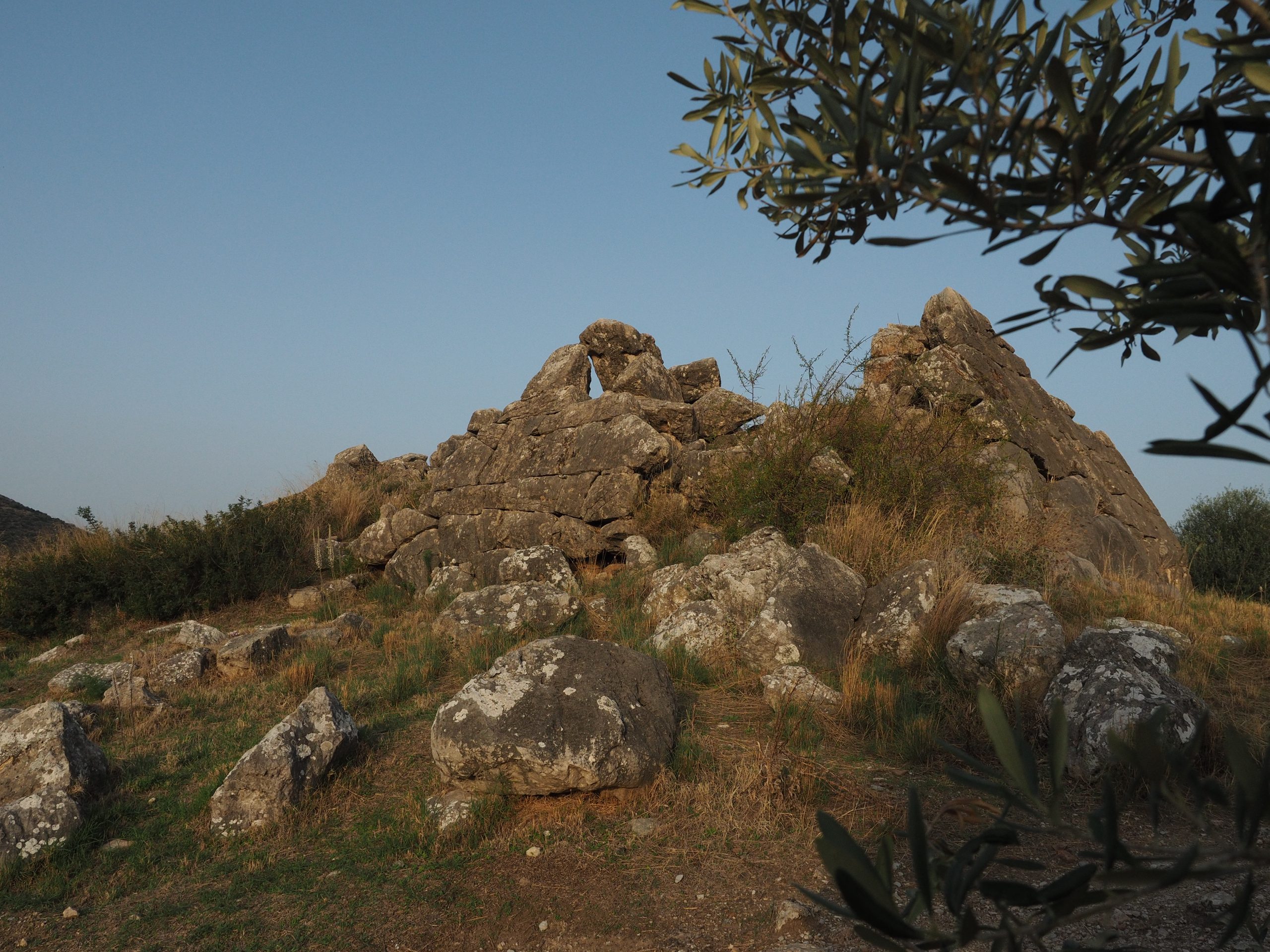
Hellinikon – Historical Interpretations
8. Pausanias’ Interpretations
Most importantly, people weren’t keen on presenting this building apart from Pausanias, who, during the 2nd century AD, provided a story behind the pyramids of Hellinikon. Hence, it was used as a tomb for Argives killed in the battle around 669/668 BC. More specifically, the war was between the two sides of Proetus and Acrisius, which fought to win the throne of Argos.
9. Actual Number of Hellinikon Monuments
Furthermore, we must dive into deeper detail about the origin and date of the Hellinikon Pyramid excavation. Nonetheless, before that, one must state that the pyramids seem to be two in modern-day studies. Regardless, the people honor the Pyramid as the Egyptian monumental structure on Greek soil, and historians analyze it entirely as one.
10. First Early Interpretations
The point above leads us to an early interpretation of the excavation. The director of the study by the Archaeological School of Athens, named L. Lord, made the assumption. Hellinikon and the material found there were “guard houses capable of accommodating a small garrison. It could control the countryside and be safe behind their walls from surprise attacks by a few persons.” In conclusion, contemporary research shows designs with corridors, doors, rooms, and usual walls.
References
• Theocaris, Liritzis, Lagios, and Sampson (1997). Geophysical prospection and archaeological test. Excavation and dating in two Hellenic pyramids (Hellinikon). Surveys in Geophysics, 17, 593-618
• Louis E. Lord, Watchtowers and Fortresses in Argolis (Hellinikon). American Journal of Archaeology, Vol. 43, No. 1 (January – March 1939), pp. 78-89
• Liritzis I. 1998. Bronze Age Greek Pyramids and Orion’s belt. Griffith Observer, vol.63, n.10, 10-21
PLEASE READ: Have something to add? Visit Curiosmos on Facebook. Join the discussion in our mobile Telegram group. Also, follow us on Google News. Interesting in history, mysteries, and more? Visit Ancient Library’s Telegram group and become part of an exclusive group.

